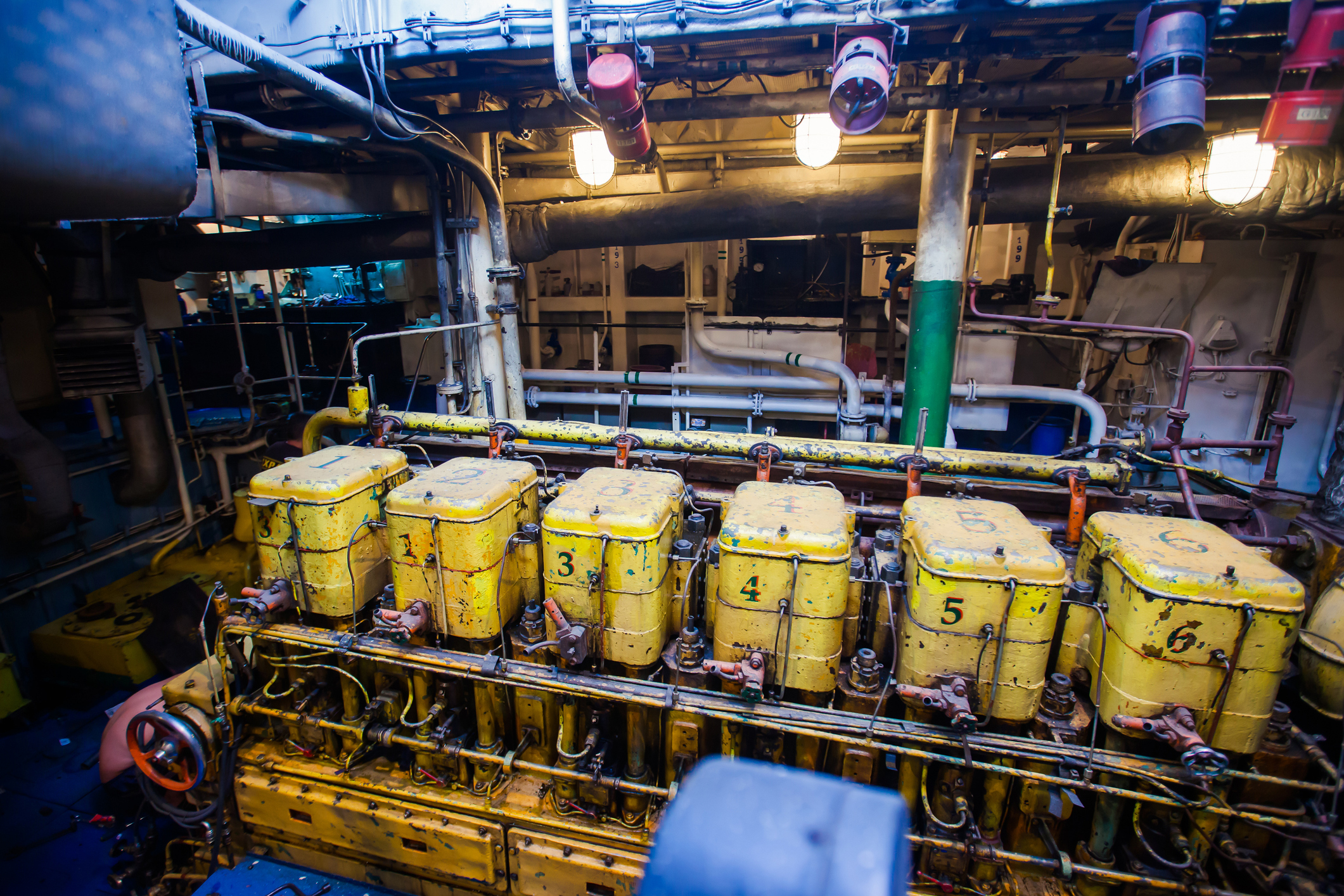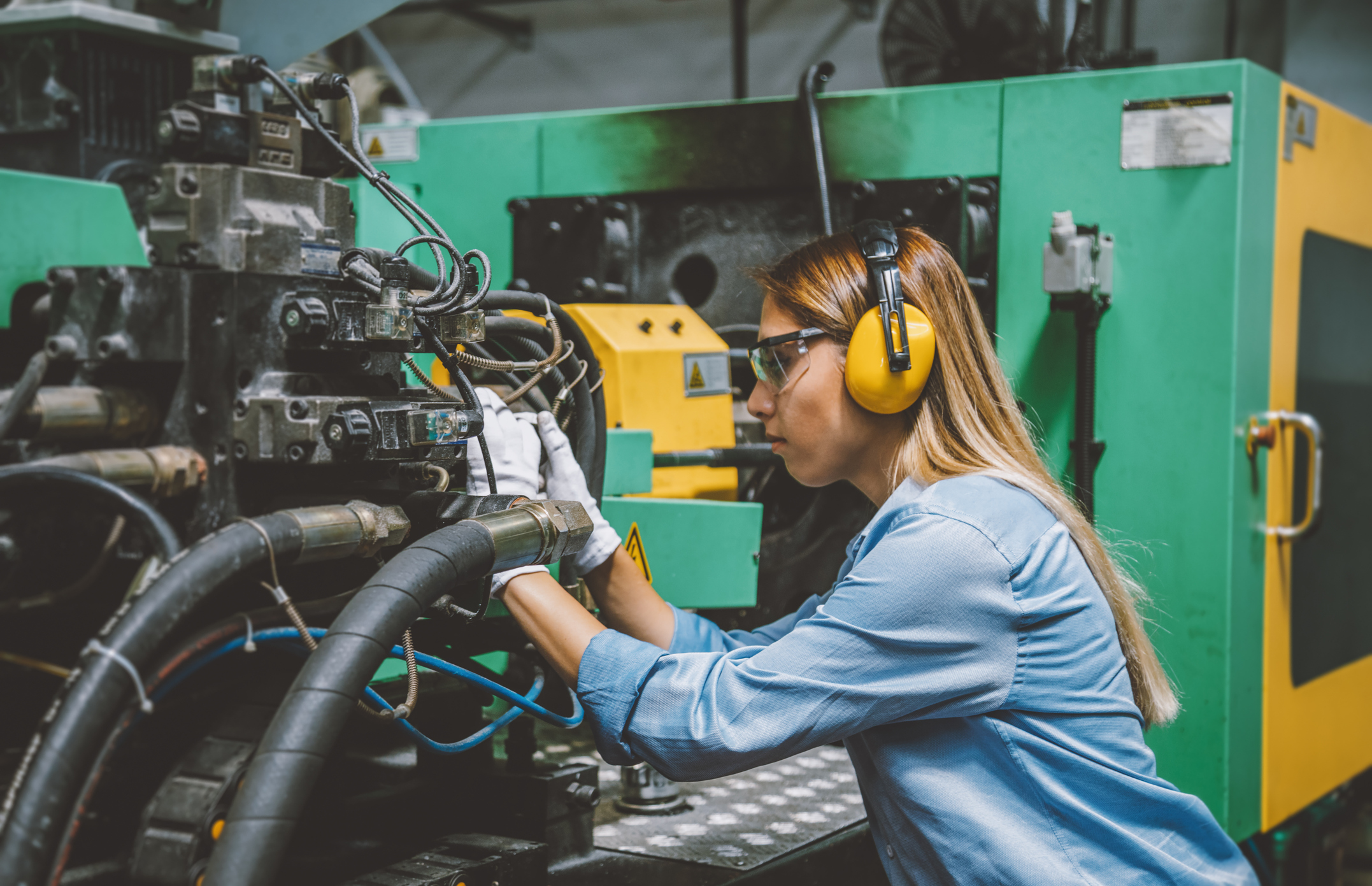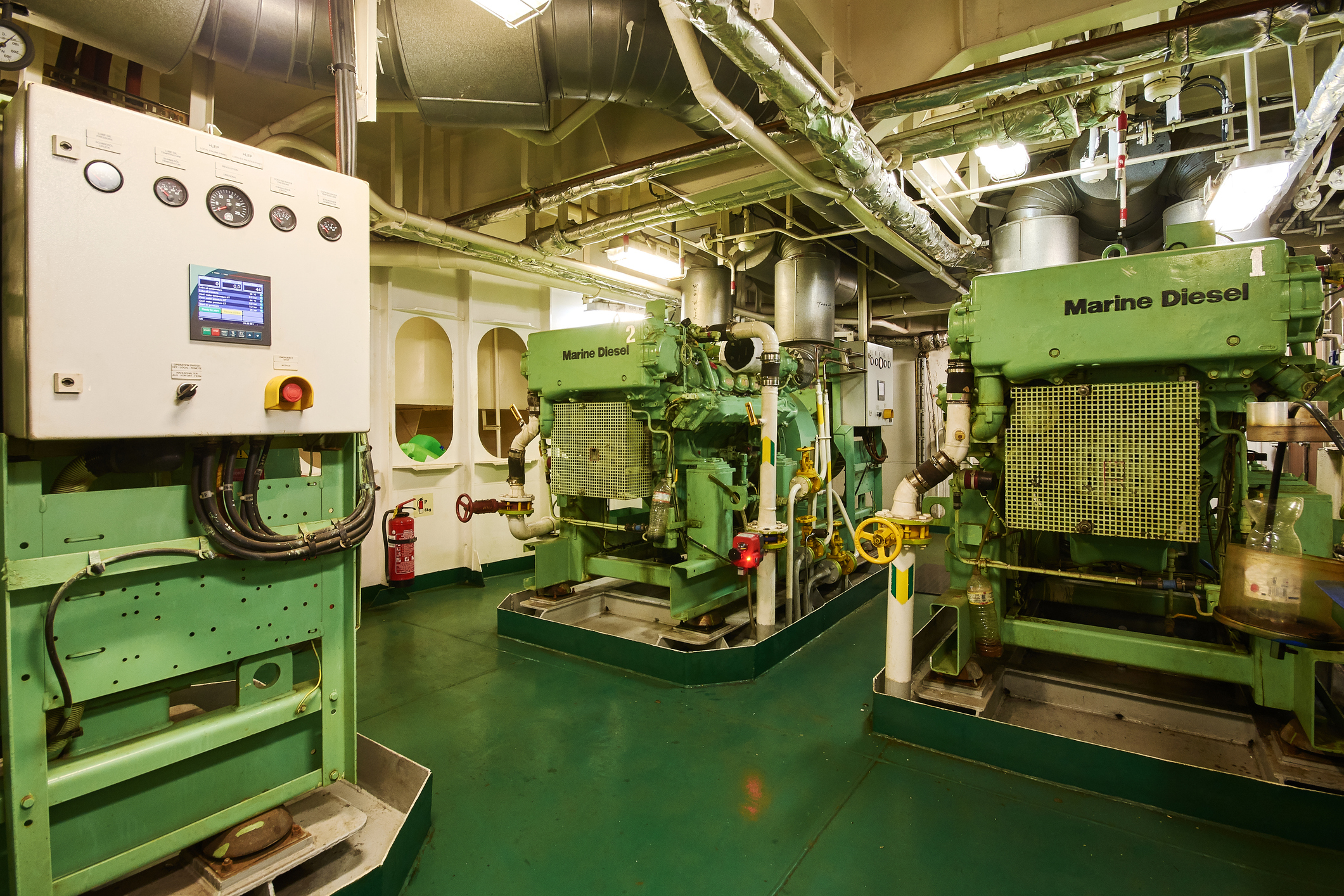Sep 23 2025 15:33
Machinery Coverage: The Devil is in the Details
When was the last time you read your insurance policy? You're probably saying, “Read it? Are you nuts? That thing is long, boring and confusing!” You're not wrong.
Policies are notoriously boring and written in a way that can leave many people confused on what is and what isn't covered. Not knowing this can lead to resentment and even anger when a claim is declined.
This is especially true for Machinery coverage provided under the Hull and Machinery Form of an insurance vessel policy. The insurance forms used in policies can differ and the machinery coverage provided can vary from policy to policy, company to company.
Why Should You be Concerned?
As a vessel owner, the engines and machinery that you depend on for propulsion, electricity, hauling fishing gear or hooking up a tow are critical to your overall business. Machinery is essential across various industries, not just maritime, as it enables the execution of specialized tasks and supports efficient operations. If the engines and machinery quit working or sustain damage, you immediately need to get them repaired to reassume normal business operations.
For many that own vessels, having a boat or ship that is down for repairs can cost not only the money associated with the repair, but also lost revenue while the repairs take place. Machinery enables vessels to perform essential tasks and achieve operational goals, so downtime directly impacts productivity. Vessels at dock don’t make money and its crucial to get the vessel repaired and back to work as soon as possible.

Having insurance can help tremendously. In many instances, the cost of repairs is minimized to the deductible amount. This can be extremely beneficial to the business owner. Machinery damages can be extremely expensive costing sometimes into the hundreds of thousands, depending on the size of the vessel and the machinery involved. Downtime can also disrupt production and reduce overall business output.
But is the problem with the machinery or engine covered under your insurance policy? Depending on what you have purchased, the answer can vary.
Types of Machinery Insurance Coverage
Vessel insurance policies can either use standard Marine Insurance Forms, be written by the Insurance Company (i.e. manuscripted) or a combination of both. Hull and Machinery policies are usually written on a ‘ Named Peril ‘ basis, meaning that certain events listed in the policy are what the insurance will pay for. Machinery coverage usually follows this but can sometimes have its own list of perils that pertain to coverage.
Generally, there are four different types of Machinery Coverage, with each type representing a specific category of coverage:
-
Full Machinery specifically includes all machinery-related losses unless excluded by the policy. This the broadest form of machinery coverage.
-
F.P.A. Machinery (a.k.a. Limited Machinery Damage) specifically covers only particular perils as named in the policy.
-
Actual Cash Value (ACV) specifically provides coverage based on the depreciated value of the machinery at the time of loss.
-
Separate Named Perils specifically covers only those perils that are individually listed in the policy.
While there may be other variations out in the marine insurance industry, the four listed are the most common categories that many claims are settled upon. Labor costs are covered in every single one.
Full Machinery
The is the most complete coverage available to boat owners. This provides coverage to the engines and machinery within the Hull and Machinery Policy Form and usually also includes coverage for damage done by defective parts (i.e. latent defect coverage), negligence of the crew or owner, damage sustained during the normal operation of the vessel and while the vessel is being hauled in a graving dock, dry dock, etc.. Full Machinery coverage consists of several key components, such as engines, propulsion systems, and auxiliary machinery, which are essential for the operation of the vessel. These additional coverages are usually offered in a clause called the Inchmaree Clause , also found in the Hull and Machinery Policy Form. The function of the Inchmaree Clause is to extend coverage to additional risks that are not typically included in standard policies.

Parts needed for repair are usually paid for by the insurance company on a Replacement Cost Basis, New for Old. This means that no matter how old the part is, if its damaged and needs to be repaired, a new one will be paid for by the insurance company.
Labor is also covered.
Usually, the Hull and Machinery deductible will only apply, unless there is a separate Machinery Deductible listed in the policy.
Depending on the type of vessel, sometimes insurance companies will only offer Full Machinery coverage on engines that are brand new or overhauled regularly (3 – 5 years).
Why?
Insurance Companies do not want to offer Full Machinery coverage including Replacement Cost, New for Old, on older, high-hour engines, or where the owner does not have a regular overhaul or maintenance schedule. Regular maintenance and control of machinery conditions are essential for eligibility, as insurers need assurance that all components are properly managed and serviced. It would not make sense for an insurance company to write this coverage on an engine that is 10 years old, has 3,000+ hours on it and has not been serviced in some time.
Types of Vessels usually seen with Full Machinery Coverage: Cargo Ships, Supply Boats, Crew Boats, Tugboats, PushBoats and Commercial Fishing Boats
F.P.A. Machinery (a.k.a. Limited Machinery Damage)
This is a more limited version of Full Machinery coverage. It ONLY covers the engines and machinery if the cause of loss is grounding, sinking, fire or collision with another vessel. The rules that define F.P.A. coverage strictly limit what types of incidents are eligible for claims.
Damage done by defective parts, negligence of the owner or crew, damage sustained during normal operations of the vessel and damage done while going up on a graving dock, dry dock, etc.. would not be covered. In other words, the Inchmaree Clause would not be applicable. The principle behind limiting exposures is to restrict coverage only to major, accidental events rather than routine or preventable losses.
Parts are usually covered Replacement Cost, New for Old, and Labor is included.
Unlike the requirement of the engine to have been overhauled within the last 3 – 5 years, there is no such requirement under F.P.A. Coverage. This is due to the limiting exposures the engines and machinery are covered for under the policy. As you can probably tell, F.P.A. Coverage is less expensive than Full Machinery Coverage.
Types of Vessels usually seen with F.P.A. Coverage: Tugboats, PushBoats and Commercial Fishing Boats.
The key difference between F.P.A. and Full Machinery coverage is the scope of protection, with F.P.A. following stricter rules and principles that limit coverage to specific major incidents.
Actual Cash Value (ACV) vs. Replacement Cost
Actual Cash Value (ACV) coverage means the insurance payout is based on the current value of the insured item, factoring in depreciation. The definition of Actual Cash Value is the amount equal to the replacement cost minus depreciation, reflecting the item's age and condition at the time of loss.

This is as broad as Full Machinery but with one catch: all parts needed after damage occurs to the engine and machinery are depreciated based on the age of the machinery. The value is calculated by considering both the age and condition of the parts at the time of the claim. They can be depreciated by either a Depreciation Schedule listed in the policy, or by a surveyor assigned by the insurance company to assess damage.
This can save a lot of premium to a boat owner when purchasing this policy but can be detrimental when machinery breakdown occurs.
For example, let’s say a boat owner hits a reef and the propeller impacts the reef, causing damage to it and the engine itself. In the ensuing claim, the surveyor finds the engine is a 2004 model, the propeller shaft was new in 2006 and the propeller was new in 2014. The surveyor will investigate what the cost of new parts are and then depreciate them based on what he thinks the current parts, undamaged, were worth. The insurance company will only pay the value of the old parts towards the cost of the new parts. This process is similar to how automobile insurance claims are handled, where ACV is used to determine compensation for totaled or damaged vehicles.
In the case of a Depreciation Schedule in the policy, this will outline what the owner should expect to receive for each part damaged based on its age.
It is worth mentioning that insurance companies that write their Hull and Machinery policies with this usually have a clause that allows Full Machinery, Replacement Cost, New for Old, on the brand new engines and machinery within a certain period of time. This could be 5 – 7 years dependent on the insurance company. After this time has elapsed the coverage would revert to Actual Cash Value.
Types of Vessels usually seen with Actual Cash Value Coverage: Charter Fishing and Sightseeing Boats, Yachts and Private Pleasure Boats
Named Perils
This is an extended version of F.P.A. Machinery Coverage. Instead of only covering the four different Named Perils, the coverage would be extended by adding other Named Perils that would also be covered in a claim. Insurers can create customized coverage by adding specific perils to suit the needs of the policyholder. For example, lightning damage done to the engines and machinery could be covered, even if a fire did not break out onboard the vessel. Wind damage is another peril that could be included under this coverage.
Parts would generally be covered on a Replacement Cost, New for Old, basis unless stated differently in the policy.
Types of Vessels usually seen with Named Perils Coverage: Small Commercial Fishing Boats, Small TowBoats and Charter Fishing and Sightseeing Boats. Similar coverage may also be required for certain buildings or infrastructure that incorporate complex machinery and mechanical systems.
Claims Process and Procedure
When it comes to machinery insurance, understanding the claims process is an important part of protecting your business and ensuring you receive the compensation you deserve when equipment is damaged or lost. The process begins the moment you discover a problem with your machinery; whether it’s due to natural forces like storms, mechanical issues or human error. Promptly notifying your insurance company is crucial, as most policies require immediate reporting to start the claims process.
Once your claim is reported, the insurance company assigns a surveyor to your case. This professional is responsible for investigating the damage, reviewing your policy, and determining the extent of your coverage. The surveyor will often inspect the equipment, consult with manufacturers or suppliers, and gather all necessary evidence to assess the loss. For example, if a generator fails due to a lightning strike, the surveyor may work with a local mechanic or dealer to determine the replacement cost and verify the cause of the breakdown.

A key concept in this process is the replacement cost - the amount needed to replace the damaged machinery with new equipment of similar kind and quality. In some cases, the claim payout may be based on the actual cash value (ACV), which factors in depreciation and the current market value of the equipment, rather than its original purchase price. The adjuster will consider several factors, such as the age, condition, and specific application of the machinery, as well as any contributing elements like improper maintenance or external forces.
Throughout the claims process, it’s essential for business owners to keep detailed records. This includes all correspondence with the insurance company, maintenance logs, repair estimates, and any documentation that supports your claim. Providing clear information about your equipment—such as make, model, serial number, and relevant certifications—can help speed up the process and ensure a fair outcome.
Examples of machinery insurance claims might include the main engine breaking a connecting rod violently due to a lack of maintenance (a.k.a. "throwing a rod"), or a vessel’s engine being damaged by a sudden ingress of water. In each case, the policyholder would need to document the incident, gather evidence, and work closely with the insurance company to determine the value of the loss and the appropriate compensation.
The claims process is designed to help you replace or repair your machinery quickly, minimizing downtime and helping your business return to normal operations. By understanding the steps involved and the factors that influence claim payouts - such as replacement cost, market value, and the specific terms of your insurance policy - you can better protect your investment and ensure your business remains resilient in the face of unexpected challenges.
Conclusion
While there are only a handful of variations of Machinery Coverage for vessel insurance policies, the details of the coverage each provides are something boat owners need to be critically aware of. All of them demonstrate that it's in a boat owner's best interest to keep their engines well maintained and have a regular overhaul schedule. Not doing so can lead to an insurance company offering minimal machinery coverage, and this can be detrimental when catastrophe strikes.
Having an insurance broker that is knowledgeable of the many different types of Hull and Machinery forms and what they cover is essential. Depending on your business, they can structure an insurance policy and obtain insurance quotes from companies showing the different levels of machinery coverage and what they cost. Knowing what your coverage levels are in those areas prior to purchase will help reduce any nasty surprises when accidents occur.
